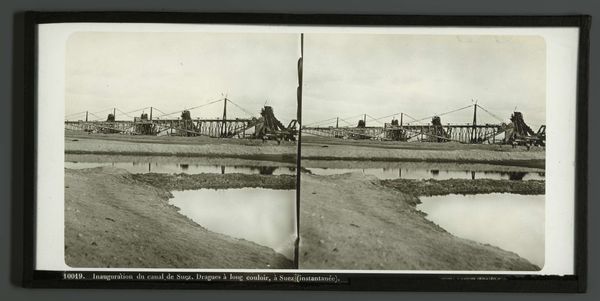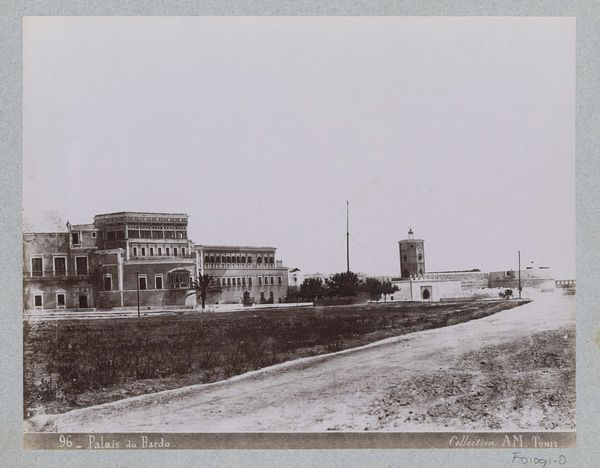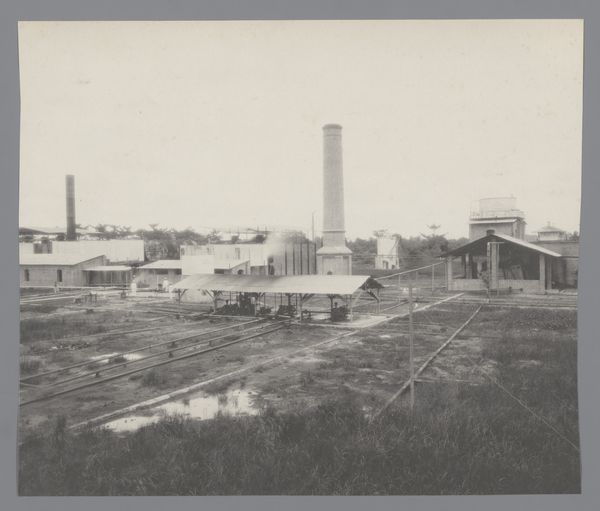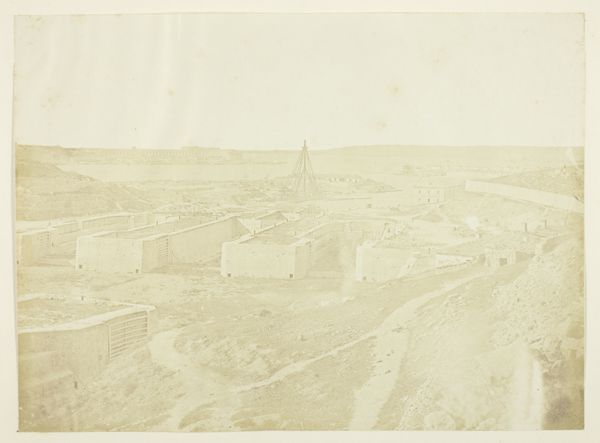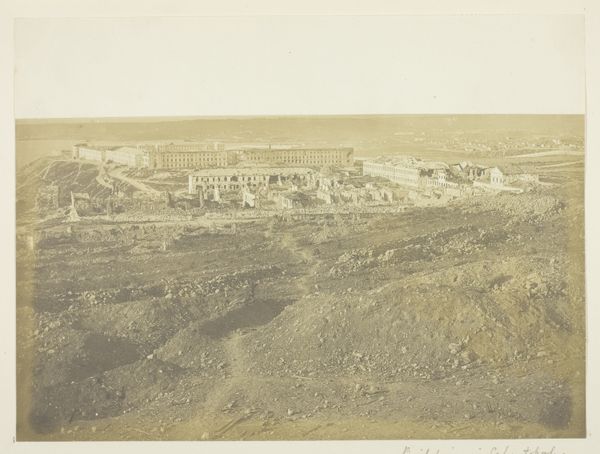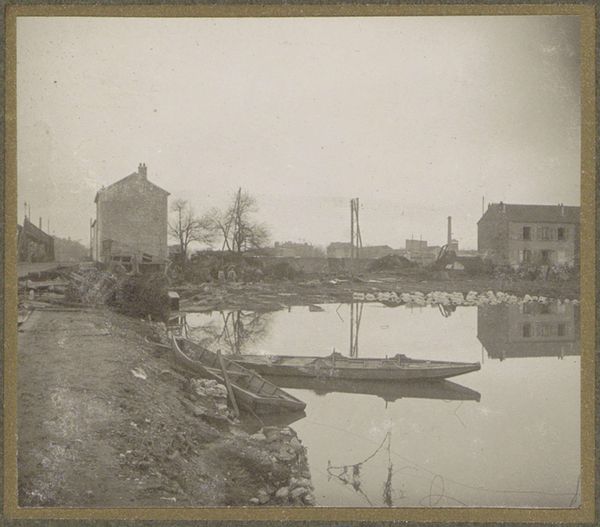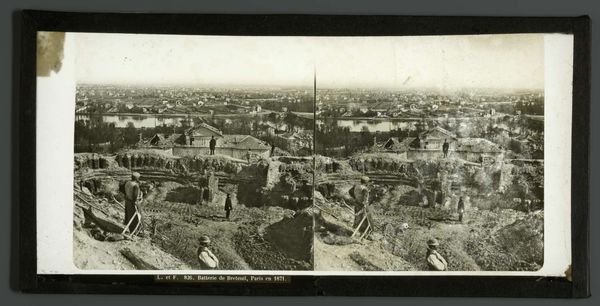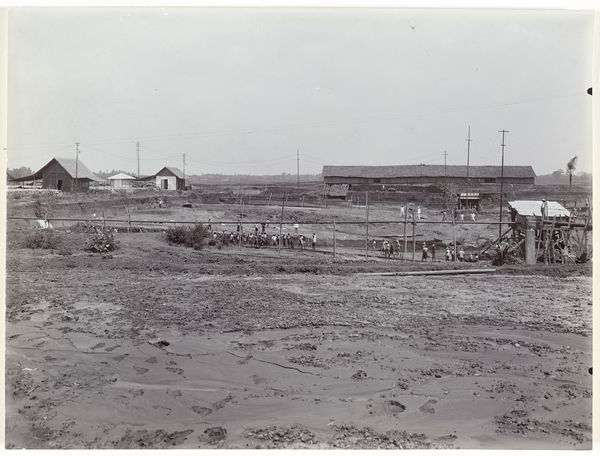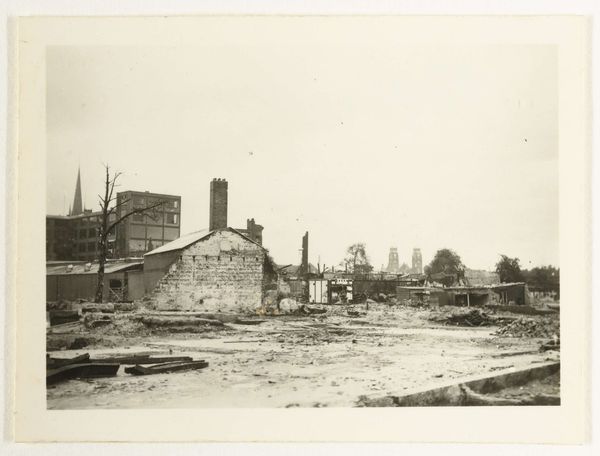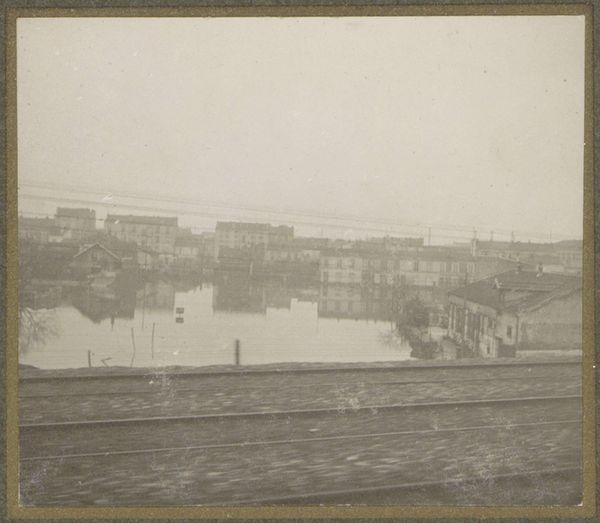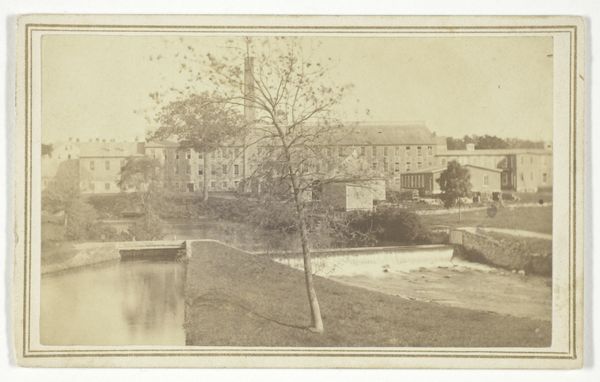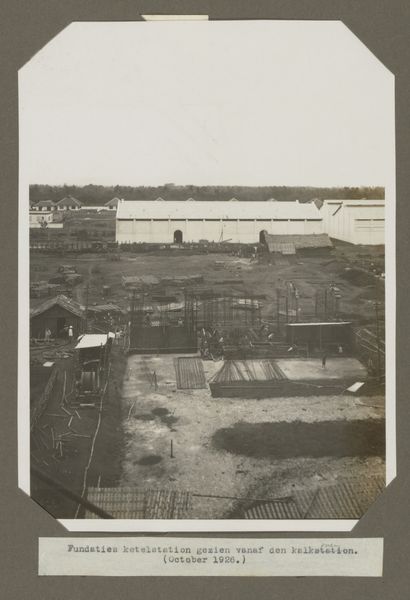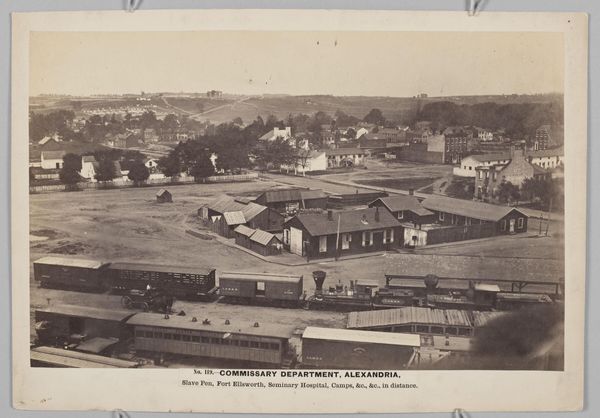
photography, site-specific, gelatin-silver-print
#
dutch-golden-age
#
landscape
#
photography
#
constructionism
#
site-specific
#
gelatin-silver-print
#
realism
Dimensions: height 29.8 cm, width 36 cm
Copyright: Rijks Museum: Open Domain
Curator: This is Jan Anthonie Eelsingh's photograph, "Stuw in de Vecht bij Junne," likely taken between 1914 and 1918. It's a gelatin-silver print currently housed here at the Rijksmuseum. Editor: My initial reaction is one of quietude. It's stark, industrial, but strangely peaceful with the calm water reflecting the construction. The scaffolding juxtaposed against the solidity of the building is interesting. Curator: Indeed. Let's consider the sociopolitical context. This photograph documents infrastructure development. Who benefits? What communities might be displaced or impacted by this dam on the Vecht River? The seemingly neutral act of building is never truly neutral, is it? Editor: No, never. And focusing on the dam itself, we can think about the sheer physical labor involved. Look at the visible brickwork and consider how it implicates human intervention in the natural landscape and our constant efforts to alter the course of nature through production. How labor creates a 'landscape' anew. Curator: Exactly. It begs questions of control, power, and human relationships to their environment during the rise of industry. What narratives does it silence? This photographic approach normalizes human dominion but fails to account for environmental impact. Editor: Looking closely at the print's tones – the contrast of light reflecting on water and dark earth – it reminds me that photography itself is material and requires labor to produce. Silver and gelatin emulsions transforming a landscape into documentation. Consider also who controlled that narrative and to whom was it displayed. Curator: Good point! Even the act of capturing this image required resources, reflecting both individual choices and social conditions. Furthermore, images of infrastructural advancement during wartime often carry patriotic undertones tied to nationalist projects. Editor: And by presenting this industrial scene almost as landscape art, it elevates the materials and the laborers, but perhaps too distantly and statically. This piece documents not only the physical changes but the start of larger socioeconomic shifts across Dutch landscapes at the turn of the century. Curator: So by analyzing it, we are also participating in the on-going evolution of the original social impact of its construction by reflecting critically on that labor. It urges a call for critical analysis, acknowledging complex, layered narratives behind progress. Editor: I think so. By grappling with materiality, labor, and its visual presence we reveal wider systems influencing even serene looking landscapes in archival imagery.
Comments
No comments
Be the first to comment and join the conversation on the ultimate creative platform.
